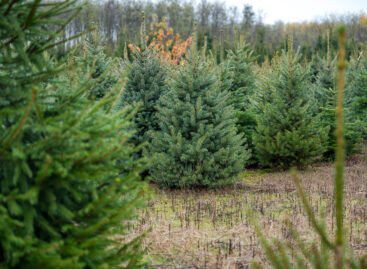Successful walnut cultivation is unthinkable without irrigation and plant protection
The competitiveness of domestic walnut cultivation could be significantly increased by developing cultivation technology and using intensive, irrigated, modern technologies. A new, alternative plant protection technology could help protect against pests on walnut plantations.

(Photo: Pixabay)
Walnuts are our most widely grown nut species, and they are also among our longest-lived crops. Although they come into fruition relatively late, they can produce fruit for 30 or even 40 years. Walnuts can also play an important role in the fight against the increasingly warming climate. When planted in a well-thought-out location, they make gardening in the summer heat bearable and even produce fruit. Walnut trees would have a place in every larger garden. Another advantage is that since they bloom late, early and late spring frosts rarely damage them, so our fruit species can be planted with great safety.
A significant part of the domestic walnut crop still comes from scattered areas, plantation cultivation is carried out on about 9200 hectares in Hungary today
The largest production area is located in the counties of Szabolcs-Szatmár-Bereg, Borsod-Abaúj-Zemplén and Somogy. Within this, the proportion of modern, irrigated plantations can still be said to be low, although walnut cultivation can be fully mechanized from plantation maintenance to harvesting and processing. The annual production quantity can be put at 6450 tons, which could be significantly increased by developing production technology and increasing the proportion of intensive, irrigated, modern, high-yielding plantations. The importance of irrigation was also pointed out by the presentations given at the walnut professional day organized by the National Chamber of Agriculture, since adequate water supply is now a basic condition for expected yields and good size. It requires a large amount of water to develop the fruit and the drupe and to maintain the huge crown, especially during the summer period, when there is a period of desert drought and no precipitation for several weeks. Precision technologies further increase the competitiveness of production. There are plantations where self-propelled robots are now used for planting, which work based on GPS-controlled coordinates. The installed electric game-deterrent fence and the drilling of the planting sites for grafts can also be done with this device, and cultivation under the crown and mowing can also be robotized.
The event also discussed disease control
According to experts, extremely encouraging results can be achieved with an alternative plant protection technology, stem injection. Stem injection provides a long-lasting effect, even for several years. With the right selection of active ingredients, it exerts its effect on the entire surface of the plant. With careful application, the load of pesticides on the environment can be reduced. Its application is almost imperceptible, it does not need to be tied to the time of day, and it is not noisy like high-performance sprayers. The presence of people and animals does not pose a problem in public areas, in scattered orchards, or in home gardens. The treatment is largely independent of the weather, it is not washed away by rain, does not evaporate prematurely, and does not scorch the leaves. It is also good news for owners of home gardens, which account for the majority of the Hungarian walnut crop, that trunk injection can also be used to effectively protect against the most serious pest of walnuts, the western walnut shell borer.
NAK – FruitVeB
Related news
If you want fresh pine, look for Hungarian-produced pine
🎧 Hallgasd a cikket: Lejátszás Szünet Folytatás Leállítás Nyelv: Auto…
Read more >Balázs Hankó: there is huge potential at the Gödöllő University
🎧 Hallgasd a cikket: Lejátszás Szünet Folytatás Leállítás Nyelv: Auto…
Read more >Cattle farmers receive new targeted support
🎧 Hallgasd a cikket: Lejátszás Szünet Folytatás Leállítás Nyelv: Auto…
Read more >Related news
László Pekó: “Coop isn’t just a network, it is a way of life – and has been for 30 years”
🎧 Hallgasd a cikket: Lejátszás Szünet Folytatás Leállítás Nyelv: Auto…
Read more >(HU) Karácsonyi tv-reklámok 2025 – indul a közönségdíj szavazás
🎧 Hallgasd a cikket: Lejátszás Szünet Folytatás Leállítás Nyelv: Auto…
Read more >McDonald’s restaurants will be closed nationwide on December 24-25
🎧 Hallgasd a cikket: Lejátszás Szünet Folytatás Leállítás Nyelv: Auto…
Read more >






